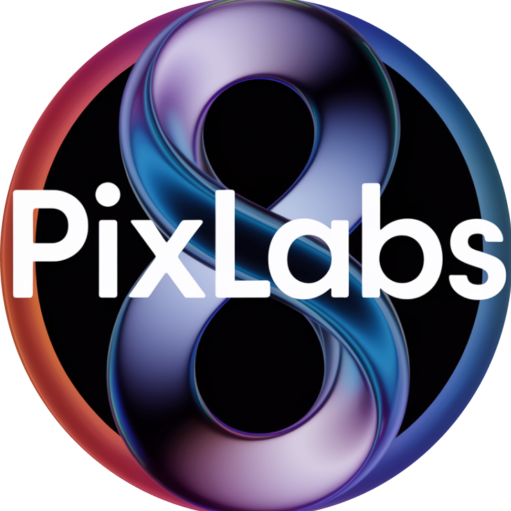تم إطلاق Meta مؤخرًا لاما 3.2مجموعة من نماذج اللغات الكبيرة متعددة اللغات (LLMs) المصممة لتطبيقات مختلفة، بما في ذلك معالجة النصوص والصور. يتضمن هذا الإصدار نماذج مع 1 مليار (1 مليار) و 3 مليار (3 مليار) المعلمات، المُحسّنة لمهام مثل الحوار متعدد اللغات، والتلخيص، واتباع التعليمات.
لنجرب Llama3.2 جرب Multimodal Llama من Meta مع المحولات في هذا العرض التوضيحي. قم بتحميل صورة وابدأ في الدردشة حولها، أو ببساطة جرِّب أحد الأمثلة أدناه.
برنامج llama3.2 chatbot مجاني على الإنترنت
الميزات الرئيسية لـ Llama 3.2
- أحجام النماذج:
- نموذج 1ب:مناسب لإدارة المعلومات الشخصية واسترجاع المعرفة متعددة اللغات.
- نموذج 3ب:يتفوق على المنافسين في مهام متابعة التعليمات والتلخيص
- القدرات المتعددة الوسائط:وتتضمن النماذج الجديدة أيضًا 11ب و 90 ب الإصدارات التي تدعم مهام التفكير بالصور. يمكن لهذه النماذج معالجة كل من النص ومدخلات الصورة، مما يجعلها متعددة الاستخدامات للتطبيقات التي تتطلب فهمًا بصريًا
- معايير الأداء:لقد ثبت أن Llama 3.2 يتفوق على العديد من النماذج الحالية في معايير الصناعة، وخاصة في مجالات مثل استخدام الأدوات وإعادة الكتابة السريعة
- الخصوصية والمعالجة المحلية:تتمثل إحدى المزايا المهمة لـ Llama 3.2 في قدرته على التشغيل محليًا على الأجهزة، مما يضمن بقاء البيانات الحساسة خاصة من خلال عدم إرسالها إلى السحابة
حالات الاستخدام
تم تصميم Llama 3.2 لمجموعة متنوعة من التطبيقات:
- المساعدين الشخصيين:يمكن استخدام النماذج خفيفة الوزن لبناء تطبيقات مساعدة محلية لإدارة المهام مثل تلخيص الرسائل أو جدولة المواعيد.
- المهام البصرية:يمكن لنماذج الرؤية الأكبر التعامل مع الاستعلامات المعقدة المتعلقة بالصور، مثل تفسير الرسوم البيانية أو الخرائط
- دعم متعدد اللغات:يدعم Llama 3.2 رسميًا لغات مثل الإنجليزية والإسبانية والفرنسية والمزيد، وهو مناسب تمامًا للتطبيقات العالمية
llama3.2 مقابل GPT4o
لاما 3.2
- حدود:متوفر بمقاسات 1ب, 3B, 11بو 90 ب.
- بنيان:يستخدم تصميمًا قائمًا على المحول مُحسَّنًا لمعالجة البيانات المرئية.
- القدرات المتعددة الوسائط:يدعم إدخال النصوص والصور، مع أداء ملحوظ في مهام مثل تحليل المستندات والإجابة على الأسئلة المرئية.
- المعالجة المحلية:تم تصميمه لأجهزة الحافة، مما يسمح بالتنفيذ المحلي دون الاعتماد على السحابة، مما يعزز خصوصية البيانات ويقلل من زمن الوصول.
- أداء:يتميز بمهام التفكير البصري المحددة ويعد فعالاً من حيث التكلفة للمشاريع التي تركز على الميزانية.
جي بي تي-4o
- حدود: يقدر بأكثر من 200 مليار، مع التركيز على القدرات المتعددة الوسائط الواسعة.
- بنيان:يستخدم تصميم محول متعدد الوسائط يدمج معالجة النصوص والصورة والصوت والفيديو.
- القدرات المتعددة الوسائط:يتعامل مع مجموعة واسعة من أنواع الإدخال (النص والصورة والصوت والفيديو)، مما يجعله مناسبًا للتطبيقات المعقدة التي تتطلب تكامل البيانات المتنوعة.
- سرعة المعالجة:تعمل على معالجة الرموز بشكل أسرع بحوالي 111 رمزًا في الثانية، بالمقارنة مع لاما 47.5 رمزًا في الثانية.
- طول السياق:يدعم كلا النموذجين نافذة سياق الإدخال لما يصل إلى 128 ألف رمز، لكن GPT-4o يمكنه توليد ما يصل إلى 16 ألف رمز إخراج.
مقارنة الأداء
| ميزة | لاما 3.2 | جي بي تي-4o |
|---|---|---|
| حدود | 1ب، 3ب، 11ب، 90ب | أكثر من 200 مليار |
| دعم متعدد الوسائط | نص + صورة | نص + صورة + صوت + فيديو |
| سرعة المعالجة | 47.5 رمزًا/ثانية | 111 رمزًا/ثانية |
| طول السياق | ما يصل إلى 128 ألف رمز | ما يصل إلى 128 كيلو بايت من المدخلات / 16 كيلو بايت من المخرجات |
| القدرة على المعالجة المحلية | نعم | يعتمد بشكل أساسي على السحابة |
حالات الاستخدام
- لاما 3.2 يتميز هذا البرنامج بقدرته العالية بشكل خاص في السيناريوهات التي تتطلب تحليلًا فعالًا للمستندات ومهام التفكير البصري. كما أن قدرته على التشغيل محليًا تجعله مثاليًا للتطبيقات التي تكون فيها خصوصية البيانات ذات أهمية قصوى.
- جي بي تي-4oتتميز هذه التقنية بعدد معلمات أعلى وسرعة معالجة أسرع، وهي تتفوق في المهام المتعددة الوسائط المعقدة التي تتطلب دمج أشكال مختلفة من الوسائط. وهي مناسبة لتطبيقات مثل المساعدين الافتراضيين التفاعليين أو إنشاء محتوى الوسائط المتعددة.
الخاتمة
من خلال Llama 3.2، تهدف Meta إلى تزويد المطورين بأدوات قوية لإنشاء تطبيقات تعتمد على الذكاء الاصطناعي، وهي تطبيقات فعّالة وخاصة وقادرة على التعامل مع مهام متنوعة عبر لغات ووسائط مختلفة. ويعزز التركيز على المعالجة المحلية من جاذبيتها في البيئات الحساسة للخصوصية.
الأسئلة الشائعة:
- ما هو نموذج Llama 3.2؟
- Llama 3.2 عبارة عن مجموعة من نماذج اللغة الكبيرة متعددة الوسائط (LLMs) المُحسّنة للتعرف البصري، والتفكير في الصور، والتعليقات التوضيحية، والإجابة على الأسئلة العامة حول الصورة.
- كيف يمكنني استخدام Llama 3.2؟
- يمكنك استخدام Llama 3.2 للأغراض التجارية والبحثية، بما في ذلك التعرف البصري، والتفكير في الصور، والتعليقات التوضيحية، والدردشة الشبيهة بالمساعد مع الصور.
- ما هي شروط الترخيص لاستخدام Llama 3.2؟
- يخضع استخدام Llama 3.2 لترخيص Llama 3.2 Community License، وهو عبارة عن اتفاقية ترخيص تجارية مخصصة.
- ما هي حالات الاستخدام المقبولة لـ Llama 3.2؟
- تتضمن حالات الاستخدام المقبولة الإجابة على الأسئلة المرئية، والإجابة على الأسئلة المرئية في المستندات، وترجمة الصور، واسترجاع النص من الصورة، والتأريض المرئي.
- هل هناك أي قيود على استخدام Llama 3.2؟
- نعم، لا ينبغي استخدام Llama 3.2 بأي طريقة تنتهك القوانين أو اللوائح المعمول بها، أو بأي طريقة محظورة بموجب سياسة الاستخدام المقبول وترخيص Llama 3.2 Community.
- كيف يمكنني تقديم تعليقات أو الإبلاغ عن مشكلات مع النموذج؟
- يمكن الإبلاغ عن التعليقات والمشكلات من خلال مستودع GitHub الخاص بالنموذج أو عن طريق الاتصال بـ Meta مباشرة.
- ما هي متطلبات الأجهزة والبرامج لتدريب Llama 3.2؟
- تم تدريب Llama 3.2 باستخدام مكتبات تدريب مخصصة ومجموعة وحدة معالجة الرسوميات من Meta والبنية الأساسية للإنتاج. وهو محسّن للأجهزة من نوع H100-80GB.
- كيف تضمن Meta الاستخدام المسؤول لـ Llama 3.2؟
- تتبع Meta استراتيجية ثلاثية الأبعاد لإدارة مخاطر الثقة والسلامة، والتي تتضمن تمكين المطورين من نشر تجارب آمنة، والحماية من المستخدمين المعادين، وتوفير الحماية المجتمعية ضد سوء الاستخدام.
